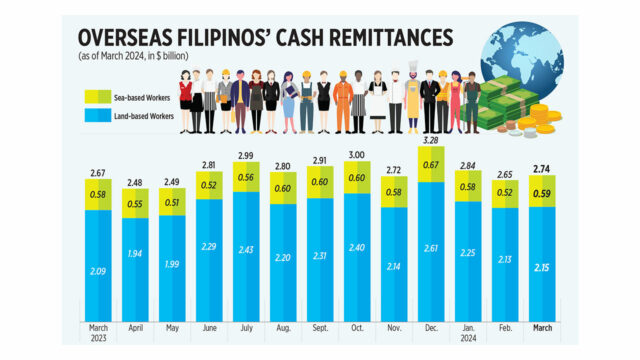OTTAWA — Nobel Prize-winning Canadian writer Alice Munro, whose exquisitely crafted tales of the loves, ambitions, and travails of small-town women in her native land made her a globally acclaimed master of the short story, has died at the age of 92, her publisher said on Tuesday.
Ms. Munro had died at her home in Port Hope, Ontario, said Kristin Cochrane, chief executive officer of McClelland & Stewart.
“Alice’s writing inspired countless writers … and her work leaves an indelible mark on our literary landscape,” she said in a statement.
The Globe and Mail newspaper, citing family members, said Ms. Munro had died on Monday after suffering from dementia for at least a decade.
Ms. Munro published more than a dozen collections of short stories and was honored with the Nobel Prize in Literature in 2013.
Her stories explored sex, yearning, discontent, aging, moral conflict, and other themes in rural settings with which she was intimately familiar — villages and farms in the Canadian province of Ontario. She was adept at fully developing complex characters within the limited pages of a short story.
“Alice Munro was a Canadian literary icon. For six decades, her short stories captivated hearts around Canada and the world,” Canadian Heritage Minister Pascale St-Onge said on the X social media network.
Ms. Munro, who wrote about ordinary people with clarity and realism, was often likened to Anton Chekhov, the 19th century Russian known for his brilliant short stories — a comparison the Swedish Academy cited in honoring her with the Nobel Prize.
Calling her a “master of the contemporary short story,” the Academy also said: “Her texts often feature depictions of everyday but decisive events, epiphanies of a kind, that illuminate the surrounding story and let existential questions appear in a flash of lightning.”
In an interview with the Canadian Broadcasting Corp. after winning the Nobel, Ms. Munro said, “I think my stories have gotten around quite remarkably for short stories, and I would really hope that this would make people see the short story as an important art, not just something that you played around with until you’d got a novel written.”
Her works included: Dance of the Happy Shades (1968), Lives of Girls and Women (1971), Who Do You Think You Are? (1978), The Moons of Jupiter (1982), Hateship, Friendship, Courtship, Loveship, Marriage (2001), Runaway (2004), The View from Castle Rock (2006), Too Much Happiness (2009), and Dear Life (2012).
The characters in her stories were often girls and women who lead seemingly unexceptional lives but struggle with tribulations ranging from sexual abuse and stifling marriages to repressed love and the ravages of aging.
“Last month I reread all of Alice Munro’s books. I felt the need to be close to her. Every time I read her is a new experience. Every time changes me. She will live forever,” leading Canadian author Heather O’Neill said in a post on X.
Ms. Munro’s story of a woman who starts losing her memory and agrees to enter a nursing home titled “The Bear Came Over the Mountain,” from Hateship, Friendship, Courtship, Loveship, Marriage, was adapted into the Oscar-nominated 2006 film Away From Her, directed by fellow Canadian Sarah Polley.
‘SHAME AND EMBARRASSMENT’
Canadian novelist Margaret Atwood, writing in the Guardian after Ms. Munro won the Nobel, summarized her work by saying: “Shame and embarrassment are driving forces for Munro’s characters, just as perfectionism in the writing has been a driving force for her: getting it down, getting it right, but also the impossibility of that. Munro chronicles failure much more often than she chronicles success, because the task of the writer has failure built in.”
American novelist Jonathan Franzen wrote in 2005, “Reading Munro puts me in that state of quiet reflection in which I think about my own life: about the decisions I’ve made, the things I’ve done and haven’t done, the kind of person I am, the prospect of death.”
The short story, a style more popular in the 19th and early 20th century, has long taken a back seat to the novel in popular tastes — and in attracting awards. But Ms. Munro was able to infuse her short stories with a richness of plot and depth of detail usually more characteristic of full-length novels.
“For years and years, I thought that stories were just practice, ’til I got time to write a novel. Then I found that they were all I could do and so I faced that. I suppose that my trying to get so much into stories has been a compensation,” Ms. Munro told the New Yorker magazine in 2012.
She was the second Canadian-born writer to win the Nobel literature prize but the first with a distinctly Canadian identity. Saul Bellow, who won in 1976, was born in Quebec but raised in Chicago and was widely seen as an American writer.
Ms. Munro also won the Man Booker International Prize in 2009 and the Giller Prize — Canada’s most high-profile literary award — twice.
Alice Laidlaw was born to a hard-pressed family of farmers on July 10, 1931, in Wingham, a small town in the region of southwestern Ontario that serves as the setting for many of her stories, and started writing in her teens.
Ms. Munro originally began writing short stories while a stay-at-home mother. She intended to someday write a novel, but said that with three children she was never able to find the time necessary. Ms. Munro began building a reputation when her stories started getting published in the New Yorker in the 1970s.
She married James Munro in 1951 and moved to Victoria, British Columbia, where the two ran a bookstore. They had four daughters — one died just hours after being born — before divorcing in 1972. Afterward, Ms. Munro moved back to Ontario. Her second husband, geographer Gerald Fremlin, died in April 2013.
Ms. Munro in 2009 revealed she had undergone heart bypass surgery and had been treated for cancer. — Reuters















